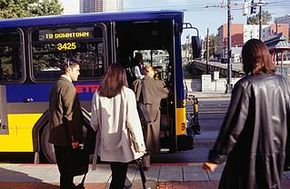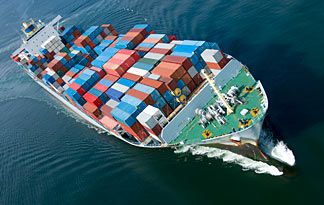In January 2004, the citizens of Milan, Italy, were preparing for a strike that would shut down all public transportation. Since an estimated 28 percent of greater Milan’s 3 million populace relied heavily on public transit, the strike meant gridlock and frustration for most of the city. For a team of researchers from the University of California, Irvine, however, the looming transit chaos provided a rare opportunity to examine how public transportation affects air quality.
By collecting sets of 24 air samples around Milan on three days before and during the public transit strike, the team could precisely monitor changes in specific chemical compounds that ultimately form tropospheric ozone (O3), a reactive oxygen molecule harmful to both people and the environment. The data the researchers collected showed that, during summer months, a public transit strike would result in ozone spikes ranging from 11 percent to 33 percent. The study proved what many already suspected: getting people out of their cars and onto public transit improves air quality. But public transportation benefits the environment in several other ways as well. Before we look at those benefits, let’s study how cars affect our planet in the first place.
Advertisement
Sure, cars are a reality of modern life, but we might not think about how drastically we’ve changed our environment in order to accommodate them. For instance, more than 40 million miles (64 million kilometers) of roads snake across the Earth’s surface, says the University of Washington's civil and environmental engineering department. That number becomes even more impressive when you consider the fact that each mile (1.6 kilometers) of a one-lane highway requires between 7,000 and 12,000 tons (6,350 and 10,886 metric tons) of material to build and maintain, according to the engineering department. That same stretch of highway also generates 2,500 tons (2,260 metric tons) of waste, according to the department. Although engineers go to great lengths to lessen the impact, building roads also damages the environment by disrupting sensitive ecosystems.
Naturally, we put those roads to good use. One billion cars, trucks and buses registered throughout the world drove over those roads in 2010, according to auto industry analyst Ward's. Unfortunately, each of these vehicles produces pollution. For instance, the average passenger car in the United States generates the following pollutants and emissions annually, according to the U.S. Environmental Protection Agency:
- 38 pounds (17 kilograms) of oxides of nitrogen
- 77 pounds (35 kilograms) of hydrocarbons
- 575 pounds (261 kilograms) of carbon monoxide
- 11,450 pounds (5,194 kilograms) of carbon dioxide
It also consumes 581 gallons (2,199 liters) of gasoline every year, according the EPA. These figures also don’t address the inevitable environmental damage caused by drilling for oil to fill vehicle tanks and contaminating groundwater with road runoff. Based on these numbers, it’s easy to see how driving strains the environment. How can public transportation alleviate that strain? Read on to find out.
Advertisement

